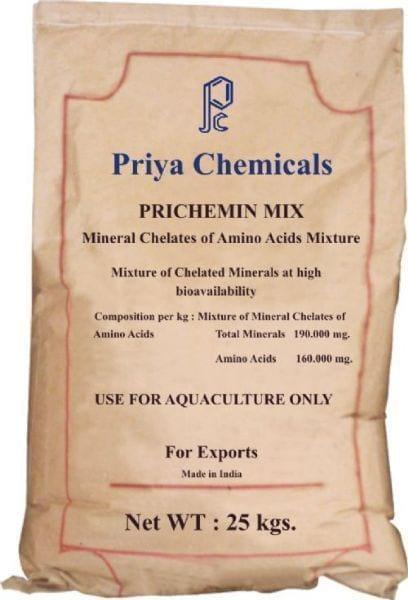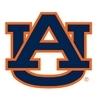Explore all the information on
Fish feed and nutrition
Welcome to the page about Fish feed and nutrition of Engormix; a source of knowledge on Fish feed and nutrition.
All the intestinal tracts of healthy aquatic animal contain lactic acid bacteria and other probiotics to assist with body function and immune growth. The intestinal tract is the body’s biggest immune organ. Those hosts that lack for a healthy microflora can rapidly die from infection. Hence these probiotics have a symbiotic effect with their hosts. Most of the animals in fisheries are oviparous or viviparous organisms. Unlike the terrestrial animals that acquired their bacteria from...
Comments : 3
Recommendations: 0
Dr. Christian Lückstädt, Technical Director for "Feed" business unit at Addcon, speaks about the use of organic acids in aquaculture at the seminar Safe Fish!. The one-day seminar, under the umbrella of “Aquatic Asia at VIV”, was held as part of the VIV at BITEC in Bangkok and hosted by leading companies in functional feed additives for aquaculture, ADDCON, Biorigin and Phytobiotics....
Comments : 77
Recommendations: 1


PRICHEMIN MIX
Priya's PRICHEMIN MIX is a mineral supplement for aquaculture. It consists of a mix of mineral chelats from aminoacids
Suggested link
Tey Guan, Animal Health Specialist at Synbio Tech Inc, introduces the probiotic for Aquaculture SYNSEA™, Probiotic from fish for Aquaculture, probiotic strains derived from the gut of different fish species, and is the most suitable for aquatic animals....
Comments : 0
Recommendations: 1
Summary Shrimp performed equally well on diets containing 16% fish meal (FM) or 8% fish meal supplemented with AQUAVI ® Met-Met (0.03-0.10%). Retention efficiencies of protein and amino acids improved significantly with the supplementation of AQUAVI ® Met-Met in low FM diets. In addition, shrimp fed the low FM diet supplemented with 0.1% AQUAVI ® Met-Met showed better retention efficiencies than those...
Comments : 1
Recommendations: 2


PRICHEMIN MIX
Priya's PRICHEMIN MIX is a mineral supplement for aquaculture. It consists of a mix of mineral chelats from aminoacids
Suggested link
First published at the 18th ISFNF conference (International Symposium on Fish Nutrition and Feeding), in Las Palmas de Gran Canaria, Spain, from 3rd to 7th June...
Comments : 9
Recommendations: 4
...
Comments : 7
Recommendations: 2


PRICHEMIN MIX
Priya's PRICHEMIN MIX is a mineral supplement for aquaculture. It consists of a mix of mineral chelats from aminoacids
Suggested link
SYNSEA™ FeedAd, a probiotic complex customized for aquatic livestock, contains PP4012, the only Lactobacillus strain isolated from fish sources, and several other patented probiotics. It is suitable for addition to aquatic livestock feed, and provides the following benefits: improved growth efficiency and regularity of fish and shrimp, suppressed growth of harmful early mortality syndrome (EMS)-causing bacteria, reduced mortality rates associated with Vibrio anguillarum and Photobacterium...
Comments : 0
Recommendations: 0
Danny Chang, General Manager of Idah Co. Ltd., talked about the process of producing high quality shrimp feed, formulation and pelleting, during FIGAP 2016 in Guadalajara, Mexico....
Comments : 1
Recommendations: 1


PRICHEMIN MIX
Priya's PRICHEMIN MIX is a mineral supplement for aquaculture. It consists of a mix of mineral chelats from aminoacids
Suggested link
For a long time, the most common method for dealing with the occurrence of bacterial infections in aquaculture was the administration of antibiotics. However, aquaculture faces serious problems due to various adverse effects of these drugs such as accumulation in the tissue and environmental microbial flora. Moreover, to use antibiotic or vaccine for fish is expensive and in many farms its use is unavailable (Yousefian and Amiri, 2009). Thus, the use of substances or additives incorporated...
Comments : 2
Recommendations: 3
1. Introduction Grouper is an economically important fish species for aquaculture in Southeast Asian countries. Due to the intensive culture, groupers have been suffering from not only viral but also bacterial diseases, such as vibriosis, resulting in serious economic loss. Vibriosis is also known as fatal hemorrhagic septicemia, and the causative agents of vibriosis belong to the genus Vibrio, such as Vibrio alginolyticus, Vibrio harveyi, and Vibrio anguillarum. The...
Comments : 1
Recommendations: 1


PRICHEMIN MIX
Priya's PRICHEMIN MIX is a mineral supplement for aquaculture. It consists of a mix of mineral chelats from aminoacids
Suggested link
Debby Yen, Business Manager for the Animal Nutrition products at SYNBIO TECH Inc, introduces SYNSEA™ FeedAd, which is a multi-strains direct fed microbial designed for aquaculture species. during IPPE 2018, in Atlanta, USA...
Comments : 7
Recommendations: 3
INTRODUCTION Herbal medicinal products are widely used around the world (Jordan et al ., 2010). A growing interest has emerged in using herbs in animal feeds by both researchers and feed companies (Logambal and Michael, 2000). Since ancient times, garlic ( Allium sativum )has been used worldwide as a seasoning, spices, and herbal remedies or folk medicine (Rivlin, 2001).Garlic has been used in ancient Egypt...
Comments : 0
Recommendations: 2


PRICHEMIN MIX
Priya's PRICHEMIN MIX is a mineral supplement for aquaculture. It consists of a mix of mineral chelats from aminoacids
Suggested link
For a long time, the most common method for dealing with the occurrence of bacterial infections in aquaculture was the administration of antibiotics. However, aquaculture faces serious problems due to various adverse effects of these drugs such as accumulation in the tissue, environmental microbial flora. In the other hand, to use antibiotic or vaccine for fish is expensive and in many farms unavailable (Yousefian and Amiri, 2009), however, the use of substances or nutrients incorporated...
Comments : 0
Recommendations: 0
...
Comments : 0
Recommendations: 1


PRICHEMIN MIX
Priya's PRICHEMIN MIX is a mineral supplement for aquaculture. It consists of a mix of mineral chelats from aminoacids
Suggested link
1. Introduction Cobia (Rachycentron canadum) is a tropical and subtropical marine fish, and has only one species under Genus Rachycentridae. Due to its good-quality meat and extraordinarily high growth rate, cobia became an important cultured fish in Taiwan during 1990s [1]. Following the successful development of cobia aquaculture technology in Taiwan, cobia now becomes one of the highest priority species for large-scale commercial aquaculture in the Americas and the Caribbean...
Comments : 0
Recommendations: 2
Introduction The global aquaculture production of food fish has increased tremendously over the last decade, reaching 62.7 million metric tonnes in 2011 or about 40.1% of world total fish production [1]. Asian seabass ( Lates calcarifer ) or barramundi is an important aquaculture species native to the Indo-West Pacific region [2] with increasing production currently estimated at 67,000 tonnes [3]. In collaboration with the Marine Aquaculture Centre of Agri-Food and...
Comments : 0
Recommendations: 1


PRICHEMIN MIX
Priya's PRICHEMIN MIX is a mineral supplement for aquaculture. It consists of a mix of mineral chelats from aminoacids
Suggested link
INTRODUCTION In a broad sense, every single microorganism has been perceived to be a pathogenic threat, which, if uncontrolled, may cause devastating disease in complex live organisms. To understand this view, we only need to look at the latest scientific reports describing the impressive diversity and complexity of the whole microbiome of healthy individuals (1–3). Furthermore, several experimental models ranging from invertebrates to higher mammals, whether...
Comments : 0
Recommendations: 4
Josef W. Barbi, President of E.S.E. & INTEC, will give a lecture in the Aquafeed Extrusion course, which will be held in Abu Dhabi, February 5, as part of VIV MEA 2018, In association with International Aquafeed, Aquaculture without...
Comments : 0
Recommendations: 1


PRICHEMIN MIX
Priya's PRICHEMIN MIX is a mineral supplement for aquaculture. It consists of a mix of mineral chelats from aminoacids
Suggested link
Álvaro Rodríguez, Manager Director for Aquaculture in Liptosa, talks about Liptofry(®) from VIV Asia 2017, In Thailand. Liptofry(®) is a nutraceutical and phytobiotic used as a natural growth promoter for fish and shrimp at early stages.
*Certain information associated with products, their composition and claims may be different depending on the geographical region and may not be applicable in all countries. Liptosa reserves the right to adapt to the requirements and legislation in each...
Comments : 1
Recommendations: 6
Cristina García Diez, Specialist for Aquaculture from Liptosa, talks about the company's products they offer to the Aquaculture market at VIV Asia 2017, in Thailand.
*Certain information associated with products, their composition and claims may be different depending on the geographical region and may not be applicable in all countries. Liptosa reserves the right to adapt to the requirements and legislation in each case.
The information and technical recommendations provided herein are...
Comments : 3
Recommendations: 8














